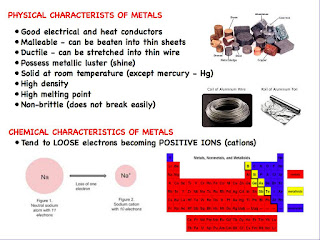Monday, February 22, 2021
Friday, February 19, 2021
DENSITY LECTURE
DENSITY LECTURE
Essential Question: What is Density and how is it related to the Mass and the Volume of an object?
Learning Objective: Density is a property of Matter. Density is calculated by dividing the mass by the volume of an object.
SWBAT:
- Calculate the density of some metals and other types of matter
- Perform a lab to demonstrate the concept of density
HMMM...
Look at the two objects in my hand... Can you tell me which one is more dense? Why? What do you need in order to answer this question?
https://www.thoughtco.com/what-is-density-definition-and-calculation-2698950
WHAT IS DENSITY?
A material's density is defined as its mass divided by its volume. Put another way, density is the ratio between mass and volume or mass per unit volume. It is a measure of how much "stuff" an object has in a unit volume (cubic meter, cubic centimeter or milliliter).
Density is essentially a measurement of how tightly matter is crammed together. The principle of density was discovered by the Greek scientist Archimedes, and it is easy to calculate if you know the formula and understand its related units.
https://www.youtube.com/watch?v=KMNwXUCXLdk
DENSITY FORMULA ρ = Greek letter "Rho"
To calculate the density (usually represented by the Greek letter "ρ") of an object, take the mass (m) and divide by the volume (v):
ρ = m / v Density = mass/volume
D = m/v
UNITS
The SI unit of density is kilogram per cubic meter (kg/m3).
Also in grams per cubic centimeter (g/cm3)
Or g/ml
One cm3 = One ml BECAUSE they occupy the same volume.
WHAT IS THE DENSITY OF WATER?
When you calculate the density of water, you discover that its density is 1.0 gram/ml or 1.0 gram/cm3.
Any object having a density LOWER than the density of water will FLOAT
Any object having a density HIGHER than the density of water will SINK
https://www.youtube.com/watch?v=SimFy9wOMXY
HOW DO WE CALCULATE DENSITY?
In studying density, it can be helpful to work a sample problem using the formula for density, as mentioned in the previous section. Recall that though density is indeed mass divided by volume, it is often measured in units of grams per cubic centimeter because grams represent a standard weight, while cubic centimeters represent the volume of the object.
For this problem, take a brick of salt measuring 10.0 cm x 10.0 cm x 2.0 cm, which weighs 433 grams. To find the density, use the formula, which helps you determine the amount of mass per unit volume, or:
ρ = m / v
In this example, you have the dimensions of the object, so you have to calculate the volume. The formula for volume depends on the shape of the object, but it's a simple calculation for a box:
v = length x width x thickness (height)
v = 10.0 cm x 10.0 cm x 2.0 cm
v = 200.0 cm3
Now that you have the mass and volume, calculate the density, as follows:
ρ = m / v
ρ = 433 g/200.0 cm3
ρ = 2.165 g/cm3
Thus, the density of the salt brick is 2.165 g/ cm3
WHEN DO WE USE DENSITY?
One of the most common uses of density is in how different materials interact when mixed together. Wood floats in water because it has a lower density, while an anchor sinks because the metal has a higher density. Helium balloons float because the density of the helium is lower than the density of air.
When your automotive service station tests various liquids, like transmission fluid, it will pour some of the fluid into a hydrometer. The hydrometer has several calibrated objects, some of which float in the liquid. By observing which of the objects float, the service station employees can determine the density of the liquid. In the case of transmission fluid, this test reveals whether service station employees need to replace it immediately, or whether the fluid still has some life in it.
https://www.youtube.com/watch?v=t9XAiRbL7t4
Density allows you to solve for mass and volume if given the other quantity. Since the density of common substances is known, this calculation is fairly straightforward, in the form. (Note that the asterisk symbol—*—is used to avoid confusion with the variables for volume and density, ρ and v, respectively.)
The change in density can also be useful in analyzing some situations, such as whenever a chemical conversion is taking place and energy is being released. The charge in a storage battery, for example, is an acidic solution. As the battery discharges electricity, the acid combines with the lead in the battery to form a new chemical, which results in a decrease in the density of the solution. This density can be measured to determine the battery's level of remaining charge.
Density is a key concept in analyzing how materials interact in fluid mechanics, weather, geology, material sciences, engineering, and other fields of physics.
USING THE FORMULA TO CALCULATE THE VOLUME OR MASS OF AN OBJECT
Given ρ = m / v, you can calculate the mass or the volume of an object by readjusting the formula
v ρ = m (calculating for mass)
m / ρ = v (calculating for volume)
https://www.youtube.com/watch?v=GEwheYZX1-s HAPPY SONG
https://www.youtube.com/watch?v=LZxXUb9iAZc - SONG
https://www.youtube.com/watch?v=t3Kb3j5snzk
https://www.youtube.com/watch?v=7tVebi3TSsg TYLER DEWITT
https://www.youtube.com/watch?v=4tYXaCADxfE TYLER DEWITT - GEOMETRY




































